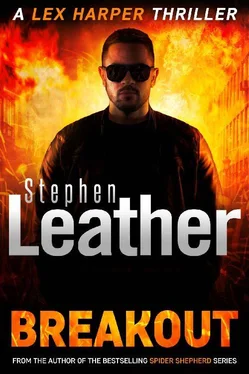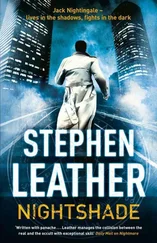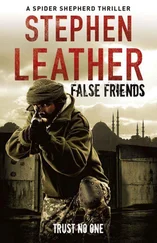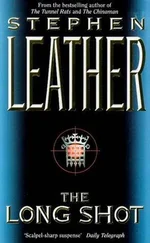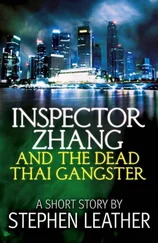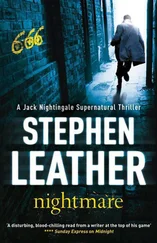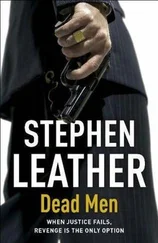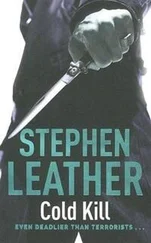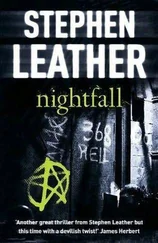‘Why’s it called that?’ Harper said, but then had his answer as, past the clothes and fabric shops, they came to smaller shops and stalls, selling small figurines of Inca-like figures, plants and herbs, dried frogs, snakes and starfish, bird skulls, owl feathers, armadillo skins and a myriad other objects. All were run by women, sitting cross-legged in the dust at the side of the street, and all were wearing the traditional black bowler hats and had pouches of coca leaves at their waists.
‘We call those women the yatiri ,’ Lupa said. ‘You’d probably call them shamans or witches. They make potions and spells that are used in traditional Aymara rituals. You can buy charms to bring you health and wealth, love potions, aphrodisiacs and even poisons too. Tourists buy them - apart from the poisons - as souvenirs and curiosities, but to Aymara people these things have real power.’
‘And what the hell are those?’ Harper said, pointing to some, withered looking, mummified animals hanging on one stall. They had white fur and long, spindly legs, but were so strange looking they appeared to be more like puppets than actual animals.
‘They’re llama foetuses,’ Lupa said.
‘Bloody hell, what do people do with them? They don’t eat them, surely?’
‘No, they bury them under the foundations of buildings.’
‘You’re kidding me? Why would they do that?’
‘It’s no joke. Belief in the old ways is still very strong. You’ll even see yatiri women waiting outside the cathedral and the churches on Sundays, selling potions and rituals to people as they emerge from church.’
‘So their customers are hedging their bets?’ Harper said. ‘A Mass for the Christian god, and a ritual for the old faith too, so whichever one ultimately proves to be the one true religion, they’ve already paid their dues.’
She shrugged. ‘People here are highly superstitious and the Aymara believe that there are many spirits inhabiting our world, whose favour can be won by making offerings. There are spirits of the sun - Inti - the mountains - Apus - the trees, the waters, and many more, but the most powerful of them all is Pachamama , the earth mother. You’ll have seen people here shaking out the last bit of their coffee onto the ground in front of their feet? They’re not getting rid of the dregs, they’re sharing their drink with Pachamama , giving her an offering. Her blessing must be sought for any disturbance of the ground, like mining, digging or building, by making an offering to her. So if you’re building a new house, you make a gift to placate Pachamama and bless the site where it is going to be built, by burying a llama foetus in its foundations. That is enough of an offering for a house but if you’re building something larger, you need a bigger offering, like a whole llama carcass. And for even larger buildings - mansions, apartment blocks, factories, or skyscrapers offices - even a whole adult llama carcass may not be seen as a sufficient offering. If any sort of animal sacrifice isn’t considered enough, there is another option, because there are always rumours here of people being sacrificed instead - a salute to our Inca roots.’
‘Do me a favour,’ Harper said. ‘The Incas checked out about 500 years ago.’
‘I’m deadly serious,’ Lupa said. ‘Human sacrifices are illegal of course … but there are still stories about well-dressed men being spotted searching the worst parts of La Paz for potential victims, who they invite to a party from which they never return. They are rumoured to be plied with drugs, alcohol and hookers until they pass out, at which point they are taken to a building site and entombed in concrete at its base as an offering to Pachamama . Obviously some people believe it’s just folklore but, trust me, it does happen, and like in any big city, there are thousands of homeless people, drug addicts and alcoholics across La Paz whose absence would barely be noticed by anyone, let alone reported.’
They moved on, but as they passed the copper sign above the entrance to the Museo de la Coca Harper again had to shake his head in disbelief. ‘Only in Bolivia - and possibly Colombia - would they have a museum dedicated to cocaine.’
‘It’s dedicated to the coca plant, not just to cocaine,’ Lupa said. ‘Indigenous people here had been chewing coca leaves to suppress hunger, thirst, pain and fatigue for at least eight thousand years before anyone thought to turn them into cocaine. And it was not just South Americans who used it; when CocaCola was first made, the recipe actually included coca leaf extract, hence the name.’
They walked for another half mile, passing a sea of dust and rubble which a hoarding proclaimed to be the site of La Paz’s newest and finest five star hotel and conference centre, though all that could now be seen were a couple of bulldozers. Eventually they came to a tree-lined square, in the heart of downtown, with manicured flowerbeds dominated by a towering statue of Bolivia’s first president, Simón Bolívar. On the far side of the square was a building that stretched the full width of it. The only breaks in its walls were the arched entrance and a double row of similarly shaped windows to either side, thickly barred with iron. Flanking them, the rendered stone walls were featureless but for small rectangular windows like firing slits, set high up in the walls.
‘There you are,’ Ricardo said. ‘La Paz’s premier tourist attraction: El Peñal de San Pedro - the San Pedro prison.’
As they walked towards it, Harper could see that the arched entrance opened onto a passage that was perhaps five metres long. It was guarded at the street end by massive arched wooden doors that now stood open. At the other end of the passage, iron gates that exactly filled the arch barred the way to the interior of the prison. Beyond them, a crowd of prisoners stood staring out, either hoping to catch sight of a visitor or just because they had nothing better to do.
Harper paused to watch the crowd of would-be visitors trying to negotiate with the guards in olive drab uniforms who were lounging, half-hidden, in the gloom of the entrance. Then he followed Ricardo and Lupa along the street and right around the perimeter of the prison. Brick guard towers rose above each of the two front corners of the sprawling building, manned by guards with what looked to be well-used .30 carbines slung over their shoulders. They were facing inwards across the patchwork of rusting, corrugated iron roofs where a couple of prisoners could be seen spreading out bedding to dry in the sun and the cold wind. The roofs were punctuated by open spaces - the courtyards that divided the prison into separate sections.
San Pedro’s other walls were much less well maintained than the facade facing the square. Rising sheer, three storeys above the street, they were crudely rough-cast with lime mortar or adobe that had peeled away in places, revealing the stone underneath. A series of small holes, a few centimetres in diameter and about four metres above the pavement, had been knocked into the walls here and there, but whether they went right through to the interior and what purpose they served wasn’t clear. ‘Ventilation?’ Harper said, but Ricardo merely shrugged his shoulders. The pavement at the foot of the walls also seemed to serve as a dumping ground for builders’ rubble and other fly-tipped rubbish, and the three of them had to step into the road a few times to get round them. ‘The walls look climbable with the right kit,’ Harper said, ‘but the fifteen metre drop to the ground means you’d need ropes to escape that way; if you jumped, you’d shatter your legs when you hit the pavement.’
A telegraph pole at the first street corner was festooned with a forest of wires and cables, some so slack or crudely attached that they must have been put up without the knowledge of the electricity company. On the next corner, where the pavement widened for a short way, a row of low, wood and corrugated iron stalls had been erected against the wall. Only one was in use when they passed, where a toothless old woman sat cross-legged on the ground next to it, selling cigarettes, sweets, fruit and the inevitable coca leaves to passers-by.
Читать дальше
